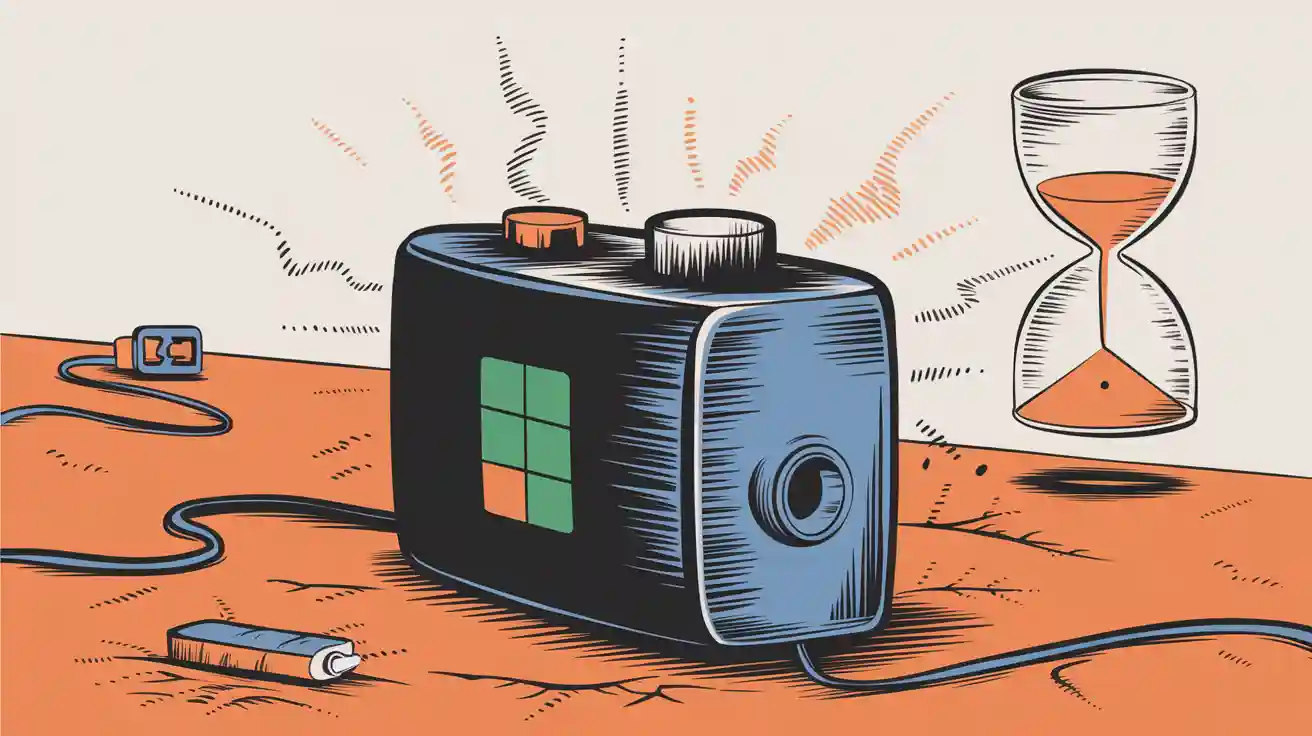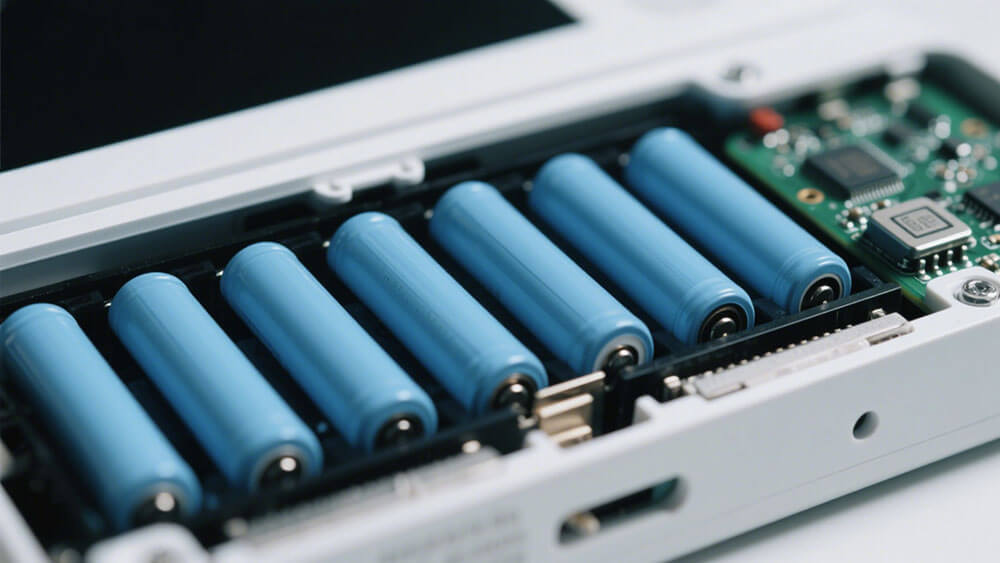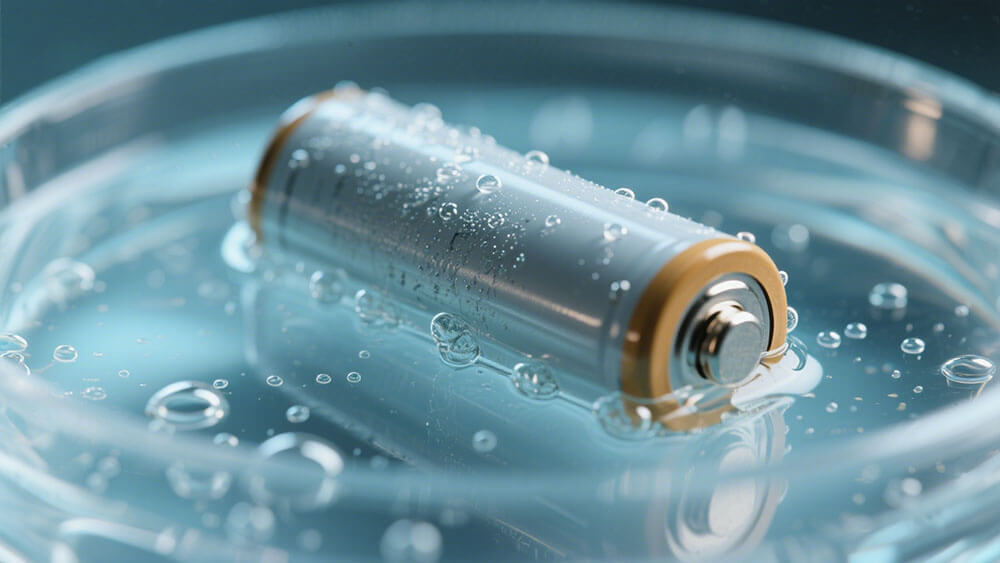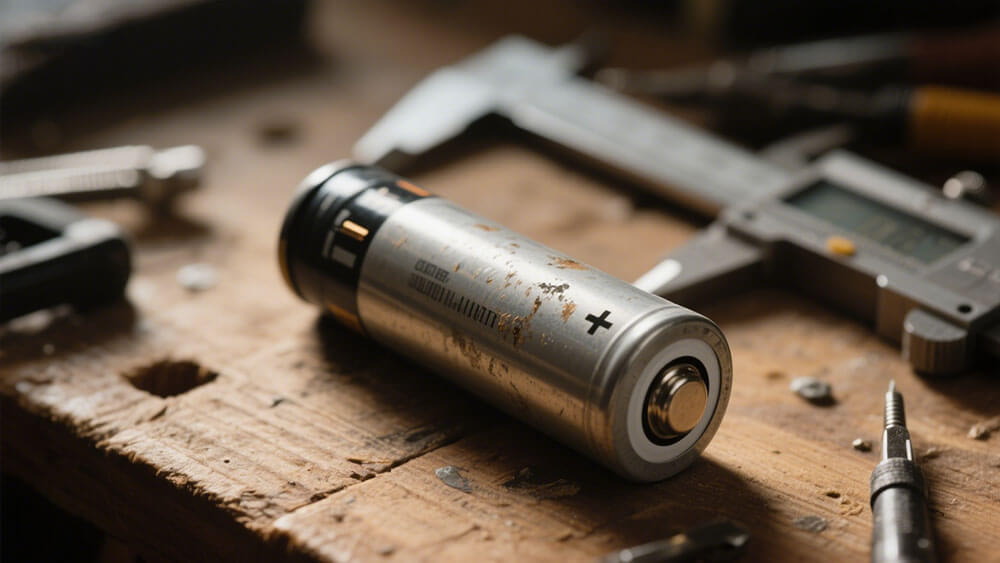
Lithium-ion batteries degrade over time, even when they are not used for a long time. This occurs because internal chemical reactions, such as electrolyte decomposition, continue at a microscopic level. Studies show that changes in electrolyte composition and dendrite formation amplify this degradation. High temperatures accelerate self-discharge and can trigger transition-metal dissolution. For industrial applications, improper storage can severely affect battery performance and reliability. To understand what happens if lithium batteries are not used for a long time, learn more about lithium-ion batteries here.
Key Takeaways
Keep lithium batteries charged between 40-60% to avoid damage. This helps them last longer.
Store batteries in a cool and dry place. This slows down harmful chemical changes.
Check batteries often and take care of them. This keeps them working well, especially for big machines.
Part 1: What happens if lithium batteries are not used for a long time

1.1 Calendar aging and its impact on lithium-ion batteries
When lithium-ion batteries remain unused, calendar aging becomes a significant factor in their degradation. This process refers to the gradual decline in battery capacity over time, even without active use. Calendar aging primarily results from chemical reactions within the battery’s components, such as the electrolyte and electrodes. These reactions occur naturally and are influenced by factors like temperature and storage conditions.
To better understand calendar aging, researchers use various methodologies. For instance, non-model-based designs, such as full-factorial and Latin hypercube approaches, assess degradation behavior comprehensively. Model-based methods, like pi-OED, refine these findings by comparing dependencies and providing more accurate predictions.
Stage | Methodology | Description |
|---|---|---|
1 | Non-model-based DoE | Full-factorial and Latin hypercube designs to assess degradation behavior. |
2 | Model-based pi-OED | Refines dependencies and compares with non-model-based approaches. |
By understanding calendar aging, you can implement strategies to slow down this process and achieve longer battery lifetimes.
1.2 Chemical reactions during idle periods
Even when lithium-ion batteries are idle, internal chemical reactions continue. These reactions often involve the decomposition of the electrolyte, which leads to the formation of unwanted byproducts. Over time, these byproducts accumulate and contribute to capacity loss. Additionally, lithium-ions may become trapped in the solid electrolyte interphase (SEI) layer, reducing their mobility and further degrading battery performance.
Idle periods also increase the risk of dendrite formation. These needle-like structures grow on the battery’s anode and can pierce the separator, causing short circuits or even complete battery failure. Proper storage conditions, such as maintaining a moderate temperature and charge level, can minimize these risks.
1.3 Loss of charge and critical threshold risks
Lithium-ion batteries experience self-discharge, even when not in use. The self-discharge rate depends on factors like temperature and the battery’s state of charge. If the charge level drops below a critical threshold, the battery may suffer irreversible damage. For example, over-discharged batteries can experience electrode degradation, leading to permanent capacity loss.
To prevent this, you should store lithium-ion batteries at an optimal charge level, typically around 40-60%. Regularly checking the charge level and recharging as needed can help maintain battery capacity and extend battery lifetime. For industrial applications, adopting these practices ensures reliable battery performance when the batteries are eventually put to use.
Part 2: Mechanisms of degradation in lithium-ion batteries

2.1 Electrolyte decomposition and its effects
Electrolyte decomposition is one of the primary factors contributing to battery degradation. Over time, the electrolyte in lithium-ion batteries undergoes chemical reactions that produce byproducts. These byproducts accumulate and interfere with the battery’s internal structure, reducing its efficiency. For instance, the formation of the solid electrolyte interphase (SEI) layer is a direct result of electrolyte decomposition. While the SEI layer initially protects the anode, its continuous growth consumes active lithium ions, leading to capacity loss.
A study analyzing over 17,000 unique species involved in SEI formation highlights the complexity of these reactions. Using quantum chemical calculations and experimental data, researchers have identified how electrolyte decomposition impacts battery performance. This research underscores the importance of selecting high-quality electrolytes and additives to minimize degradation.
To mitigate the effects of electrolyte decomposition, you should store batteries in environments with stable temperatures and avoid overcharging. These practices can slow down the chemical reactions and extend the battery’s lifespan.
2.2 Formation of dendrites and their role in capacity loss
Dendrites are needle-like structures that form on the anode during the charging process. These structures grow when lithium ions deposit unevenly, often due to high charging rates or prolonged idle periods. Dendrites can pierce the separator between the anode and cathode, causing internal short circuits. This not only reduces the battery’s capacity but also poses safety risks, such as thermal runaway.
Research provides valuable insights into the role of dendrites in battery degradation:
The manipulation of lithium dendrites significantly affects battery performance.
External conditions, such as temperature fluctuations, influence dendrite growth and capacity recovery.
Coulomb Efficiency (CE) calculations reveal trends in battery cycle decay, offering a clearer understanding of dendrite-related losses.
To prevent dendrite formation, you should use chargers with appropriate voltage and current settings. For industrial applications, implementing advanced battery management systems (BMS) can help monitor and control charging conditions effectively. Learn more about BMS operation and components here.
2.3 Growth of the solid electrolyte interphase (SEI) layer
The SEI layer forms naturally on the anode surface during the first few charge cycles. While it acts as a protective barrier, its continuous growth over time leads to capacity loss. The SEI layer consumes lithium ions and electrolyte components, reducing the number of ions available for energy storage.
Laboratory tests have established a direct link between SEI stress and capacity fading. For example, mechanical stress within the SEI layer accounts for a significant percentage of total capacity loss in various battery configurations. Additionally, lithium nuclear reaction analysis (Li-NRA) reveals that lithium accumulation within the SEI layer accelerates degradation. The introduction of specific electrolyte additives can slow this process, improving capacity retention.
To minimize SEI-related degradation, you should store lithium-ion batteries at a partial state of charge (40-60%) and avoid extreme temperatures. These measures can reduce the stress on the SEI layer and prolong battery life.
2.4 Reduced mobility of lithium ions and electrode degradation
As batteries age, the mobility of lithium ions decreases, directly impacting their performance. Several factors contribute to this issue:
SEI Layer Growth: The thickening of the SEI layer restricts lithium ion movement, reducing capacity and power output.
Lithium Plating: Excess lithium ions deposit on the anode surface, limiting the material available for ion storage. This also increases the risk of dendrite formation.
Mechanical Stress: Repeated charge-discharge cycles cause structural changes in the electrodes, lowering their ability to store lithium ions.
Cathode Dissolution: Reactions in the electrolyte dissolve cathode material, further impairing lithium-ion mobility and promoting SEI growth.
Research shows that idle lithium-ion batteries experience self-discharge due to internal chemical reactions. For example, hydrogen atoms from the electrolyte migrate to the cathode, occupying positions meant for lithium ions. This disrupts the battery’s performance and shortens its lifespan.
To address these challenges, you should adopt proper storage practices and consider using advanced battery technologies, such as LiFePO4 Lithium batteries, which offer better stability and longer lifespans. Explore more about LiFePO4 batteries here.
Part 3: External factors influencing battery degradation

3.1 Temperature effects on lithium-ion battery stability
Temperature plays a critical role in the stability and performance of lithium batteries. Extreme temperatures, whether high or low, accelerate battery degradation by influencing internal chemical reactions. High temperatures increase the rate of electrolyte decomposition and promote the growth of the solid electrolyte interphase (SEI) layer, which consumes active lithium ions. Conversely, low temperatures reduce lithium-ion mobility and increase the risk of lithium plating, leading to capacity loss and safety hazards.
Peer-reviewed studies reveal that at low temperatures, lithium-ion batteries experience a drastically reduced cycle life, with only 90-140 cycles compared to over 2000 cycles at elevated temperatures. Another study highlights the importance of thermal management, showing that different cooling methods can alter degradation rates by up to three times.
For industrial applications, maintaining optimal temperature conditions is essential to prolong battery life. Advanced thermal management systems can help regulate temperature and prevent uneven heat distribution within battery packs. These systems are particularly beneficial for industries like robotics, where consistent battery performance is crucial. Learn more about robotics applications here.
3.2 Humidity and moisture exposure risks
Humidity and moisture exposure significantly impact lithium battery stability. When batteries are exposed to high humidity, water molecules interact with the battery’s components, triggering chemical reactions that degrade performance. For example, nickel-rich layered lithium transition-metal oxides undergo ion exchange between Li+ and H+ ions from water, forming compounds like Li2CO3 and LiOH. These compounds accumulate on the battery’s surface, reducing ionic conductivity and causing capacity loss.
Condition | H2S Generation (cc/g) | |
|---|---|---|
Dry Room (30 min exposure) | 0.1 | >50 |
Dodecane Slurry | 0 | 14 |
Proper humidity management is vital for industries relying on lithium battery packs, such as security systems. Storing batteries in low-humidity environments prevents corrosion and internal damage, ensuring reliable performance. Explore security system applications here.
3.3 Best practices for storing lithium battery packs
Adopting best practices for lithium battery storage can significantly enhance their lifespan and reliability. Improper storage conditions, such as exposure to extreme temperatures or high humidity, accelerate battery degradation and increase safety risks like thermal runaway. To prolong battery life, follow these industry-recommended practices:
Temperature Control: Store batteries in a cool, dry environment, ideally at room temperature.
Avoid Direct Light: Keep batteries away from sunlight to prevent overheating.
Humidity Management: Maintain low humidity levels to avoid corrosion.
Ensure Airflow: Provide good ventilation to prevent heat accumulation.
Safe Location: Store batteries in secure, dry places away from flammable materials.
Battery Condition Check: Inspect for damage before storage.
Charge Level: Store batteries at 40-50% charge for long-term storage.
Charge Level Before Storage: Store at 50% charge to reduce stress on the battery.
Ideal Temperature Conditions: Maintain storage temperatures between 5°C–20°C (41°F–68°F).
Environmental Protection: Avoid high humidity and direct sunlight.
Safe Storage Containers: Use original packaging or plastic cases to prevent short circuits.
Proper storage practices are particularly important for industrial applications, where battery reliability directly impacts operational efficiency. If you need customized battery solutions for your industry, consult Large Power’s experts here.
Lithium-ion batteries degrade over time due to internal chemical reactions and external environmental factors, even when left unused. Proper storage practices can significantly reduce battery degradation and extend their lifespan.
Key Recommendations:
Maintain a charge level of 50% to enhance battery lifespan by up to 130%, as shown in studies from Chalmers University of Technology.
Avoid full discharges and store batteries in cool, dry environments to prevent thermal runaway and capacity loss.
Adopting these strategies ensures reliable performance for industrial applications and other critical uses. For customized lithium battery solutions tailored to your needs, consult Large Power’s experts here.
FAQ
1. What is the best way to store lithium batteries for long periods?
Store batteries at 40-50% charge in a cool, dry place. Avoid direct sunlight and high humidity to minimize battery degradation.
2. Can unused lithium batteries lose their capacity permanently?
Yes, unused batteries degrade due to chemical reactions and self-discharge. Proper storage slows this process and preserves capacity.
3. How does temperature affect lithium battery performance?
High temperatures accelerate chemical reactions, while low temperatures reduce lithium-ion mobility. Both extremes harm battery stability and lifespan.






